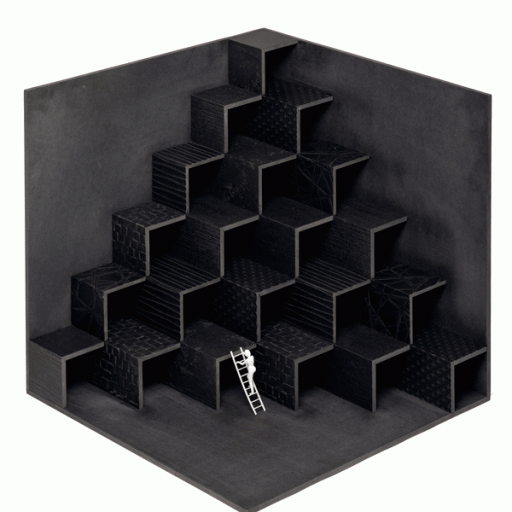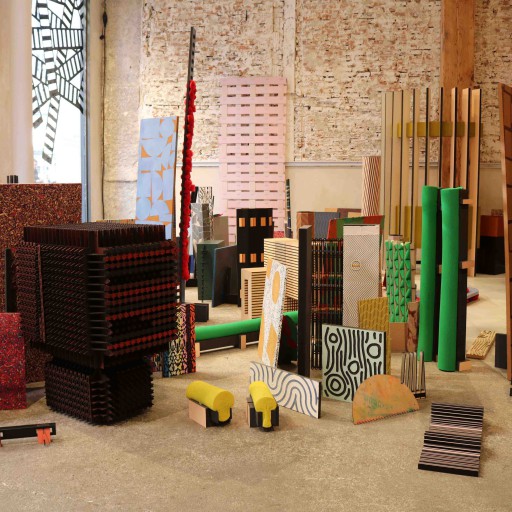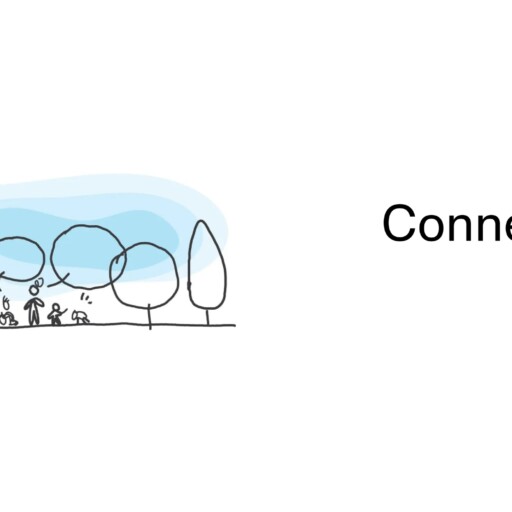Do architects really dream about building digital houses? Let’s hope so, because the future of architecture and interior design is in the cloud. The rising popularity of Non-Fungible Tokens, or NFTs, has left its mark on our sector and we want to make sure you are up to speed with all the essentials. Read on to find out.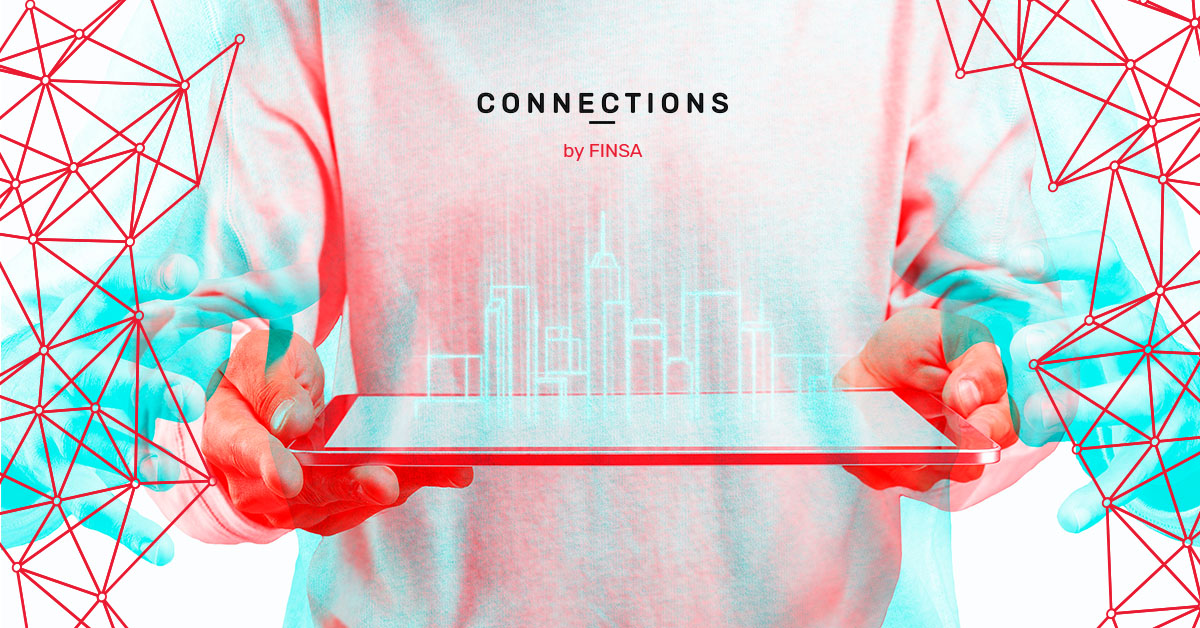
What is an NFT?
Let’s start by clearing up what a few of these terms actually mean. An NFT is a non-fungible, transferable digital product, meaning that it is unique and irreplaceable, in the same way that a work of art is. This is different to a fungible object, such as a banknote. For this reason, it must be an indivisible and rare asset, and its value is based on what it represents. These products are similar to the tickets you would receive at an amusement park that let you access different rides.
How do we know what that specific, unique, and irreplaceable value truly represents? Well, NFTs are registered via contracts that remove the need for a middleman, and they are certified via blockchain. This means that they are ‘minted’ via a decentralised network, in exactly the same way as bitcoins.
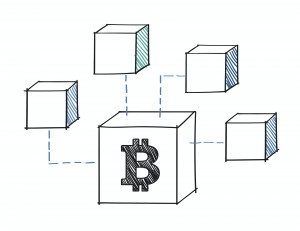
The best-known platform for creating these smart contracts and decentralised applications is Ethereum, where you can find most types of NFTs. This ecosystem has its own currency (Ether) and non-fungible token standards for registering your own NFTs (ERC-721 and ERC-115). While Ethereum is the most popular platform, there are others out there.
You’re probably asking what’s the point of registering a digital product that can be easily copied? Well, it’s the same as having an authentic Picasso in your home rather than a copy. The two works of art might look exactly the same, but it is the value of the original that sets it apart.
Where can I buy and sell NFTs?
NFTs are bought and sold in marketplaces using wallets. As these transactions are made using virtual currency, wallets are applications that allow you to store, send, and receive cryptoassets, and they also connect marketplaces with cryptocurrencies. Some of the most popular marketplaces are:
- OpenSea: the biggest digital ‘warehouse’ in existence.
- Makersplace: dedicated to digital art
- NBATopShot: sells videos of NBA plays.
Ver esta publicación en Instagram
Where can I create NFTs?
In order to create your own NFTs, you just need to start minting. The Mintable platform is the most widely used for this purpose in the NFT community, allowing you to create your NFT and give it properties that make it unique and indivisible. You just need to register on the app and complete a few steps, similar to those you would follow when uploading a product to Amazon or Wallapop.
Ver esta publicación en Instagram
Using NFTs: cryptowine, tweets, gardens, and more
NFTs are currently being used in cryptoart, digital collections of virtual goods, and games. In the latter, they are usually ‘skins’ or decorative elements.
NFTs have seen an increase in popularity in 2021 thanks to the most expensive piece of cryptoart ever sold. Everydays: The First 5,000 Days is a collage made up of 5,000 photos and signed by the artist Beeple which was sold for $69.3 million at a Christie’s auction.
Ver esta publicación en Instagram
It all started with cats
Before cryptoart and auctions, there was 2017’s Crypokitties, the first truly popular NFT project. It consisted of buying and selling animated cats that could be collected and traded.
Ver esta publicación en Instagram
A slam dunk for just $200,000
Back to the present day. If $69.3 million for cryptoart seems a little on the expensive side, for $200,000 you can own the below slam dunk by Lebron James. Yes, you could just download the video and replay it, but the original file is an NFT and belongs to its buyer:
How much is a tweet worth?
NFTs also make it easier to own digital content. Some examples of this include a tweet by a CEO that was sold for $2.9 million and the sale of an article that been published in The New York Times.
just setting up my twttr
— jack (@jack) March 21, 2006
Non-fungible pizza and cryptowine
There are also food- and beverage-related NFTs, including a range of cryptowines and non-fungible pizzas.
The digital Mona Pizza is upon us. Pizza Hut presents 1 Byte Favourites, a highly exclusive NFT minting run of 1 byte pizzas, each for the cost of 1 bite of pizza. Available for an extremely limited time, but will last forever. https://t.co/f4831jybLc pic.twitter.com/yhUbxfs7YG
— Pizza Hut Canada (@PizzaHutCanada) March 17, 2021
NFTs and videogames
One sector where NFTs are common is the world of videogames. What can we find here? Well, there is everything from Gucci sneakers for The Sims to virtual clothing for an online game. Take a look at the below video, in which a popular Spanish Youtuber is showing off his ‘skin’ for this particular game:
The possibilities are endless. You can even earn a living as a landscape designer in the virtual Minecraft world, where you will also find some NFT furniture that was recently sold. This is where we can start to see the options really open up for architects and interior designers.
What do NFTs have to offer architects and interior designers?
Architecture and interior design can be applied in many ways in the NFT world. You can do everything from register a physical property to buying virtual ones.
Physical and digital land
In the real world, governments like those of Japan and Dubai are allowing ownership claims via NFTs in order to consolidate property registers and have an open database.
Would you buy a house that you wouldn’t be able to live in? In the digital word, there are already virtual cities and real estate investors that are buying land and property for up to $50 million. In fact, Decentraland, the best-known platform in the world of virtual real estate, has sold digital land for $1 million.
Digital homes and furniture
Digital homes are built on digital land in digital cities. Mars House, designed by artist Krista Kim, was one of the first of its kind.
These digital houses need NFT furniture. Designer Andrés Reisinger has already sold ten of his virtual pieces for $70,000.
Ver esta publicación en Instagram
There is also the Homesick collection, which consists of nine 3D NFT renderings designed by Alexis Christodoulou.
Ver esta publicación en Instagram
The future of NFTs
According to Mason Nystrom, an analyst from cryptoinvestment portal Messari, the NFT market will be worth more than $1.3 billion by the end of 2021. He says that artists and brands will be the drivers behind this cryptomarket.
As we already mentioned, NFTs will make it possible to monetize digital content. We will be able to verify news as well as access services and experiences offered by brands or loyalty programs. One example is Microsoft’s rewards program that celebrated women in science, which offered NFT rewards in Minecraft. The rewards program itself was drastically improved by the addition of NFTs. This was obviously a great choice by Microsoft in an increasingly digitalised world, especially in the wake of the COVID-19 pandemic.
Digitalisation is essential and will make it easier to continue celebrating virtual events and phygital experiences, which have proved to be successful and more cost-effective ways to attract an audience. This 3D fashion design competition and this collection of digital pieces made by The Fabricant for I.T. are just two examples of this.
Ver esta publicación en Instagram
Problems with NFTs: pollution and cybersecurity
There are two main problems with NFTs: pollution and cybersecurity. We’ve already written about how our digital activity is polluting the Earth and, according to the University of Cambridge, the mathematical operations required to keep the NFT network going consume 121 terawatts every hour, which is roughly equivalent to Argentina’s annual toxic emissions.
In an attempt to make the virtual ecosystem a more sustainable place, digital artist collectives, who are aware of the energetic cost of cryptoart and the instability that blockchain miners face, sold a selection of works in blockchain, with all proceeds going to the Open Earth Foundation.
Finally, there is the matter of cybersecurity. In Chainalysis’ 2021 Crypto Crime Report, the platform concluded that the number of cybercrimes had decreased overall. Nevertheless, the platform recommended that we always verify the authenticity of the virtual goods that we buy always.
Now that you’re informed, will you get involved in the world of NFT architecture and interior design? Tell us what you think on social media by using #ConnectionsByFinsa.


